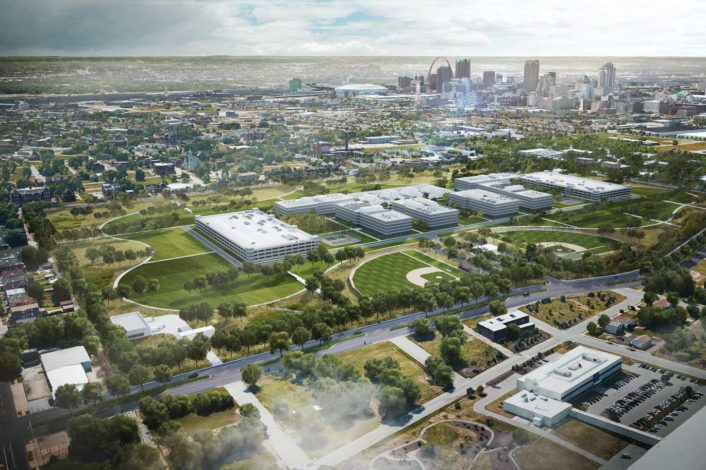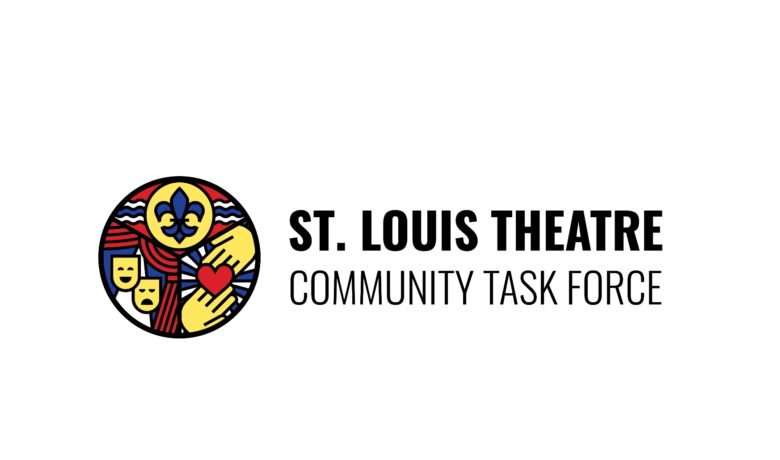NGA West is set to be built in Old North St. Louis.
Content by: St. Louis Business Journal
One of the hottest technologies these days is built around what some call the science of location, which powers everything from the maps on your phone to sophisticated guidance systems for missiles.
St. Louis is one of the hottest locations for entrepreneurs and economic developers involved in the technology. It’s likely to get hotter, thanks to a commitment by the federal National Geospatial Intelligence Agency (NGA), which plans to build a new $1.75 billion west headquarters in North St. Louis where 3,100 employees will work. The region’s business and political leaders, economic development officials, educators and entrepreneurs recognize the technology’s economic potential in the region.
“It’s an emerging and quickly growing field, both within the federal government and within industry across the board,” says Patricia Hagen, president and executive director of tech incubator T-REX. “We really recognized that this was going to be an important moment for St. Louis in terms of opportunity for economic development in geospatial technologies.”
Mapping applications on phones are probably the most obvious use of geospatial technology. But they’re just the surface. Real estate development, agribusiness, logistics and transportation, retailing and the defense industry are just a few of the industries in which geospatial technology is playing a central role.
“We realized during the competition phase the impact of the NGA that we had untapped potential,” to grow St. Louis as a hub for businesses involved in geospatial technology, Otis Williams, executive director of St. Louis Development Corporation.
“Location technology really permeates operations on the part of all industries and corporations, and since T-REX is really focused on advanced information technologies and encouraging advanced information technology, this really fit well into the focus that we have for our city,” Hagen says.
The T-REX resource center is one of the ways the St. Louis business and economic development community is helping to expand the geospatial footprint in the region.
Williams says the NGA offices and the push for a geospatial business hub could also be a boon for development in the northside area of the city that needs it.
“There’s a great need for redevelopment to occur,” he says, adding that officials will work with neighborhood groups to ensure such redevelopment benefits long-established residents and newcomers alike. “We will have added need for space. We will also look to build new housing solutions near the campus. The thing that we want to do is work with the current residents to improve their lot in life.”
A quiet presence
NGA has had a presence in St. Louis for many years, but it’s been low-key. Recently, though, the agency has emerged from the shadows as the technology has advanced and the need to attract talent in a competitive marketplace has intensified. “They needed to open up their culture and interface with the innovation community and also find ways to attract and retain young, talented people to work with them,” Hagen says.
That emergence helped drive a public push including the T-REX geospatial center and a working group of business leaders meant to solidify St. Louis’ position as a leading center of the technology. “This group is laser-focused so that as this industry grows St. Louis can be recognized as an international hub,” Hagen says.
Industry leaders such as ESRI and startups such as open-source geospatial software firm Boundless have been attracted to the region, thanks to the presence of NGA and St. Louis’ location in the heart of the Midwest.
ESRI’s St. Louis area offices in St. Charles and the Cortex neighborhood comprise its fourth-largest presence in North America, after its California headquarters, one in the Washington, D.C. area and one in Charlotte, North Carolina. “One of the biggest reasons this is a great location,” Mott says, “is because it is the middle-America location. We get a lot of employees that are from the Midwest that have Midwestern values. This is a good presence.”
She says that, in addition to working with NGA, her company works with agricultural and retailing interests out of its Missouri office. “This is a very good, centralized location,” says Mott, one of the chairs of the U.S. Geospatial Intelligence Foundation St. Louis to boost geospatial technology in the region. “They’re seeing this opportunity. Nobody has really ever staked a claim stating they are a geospatial center of excellence.”
That talent, he says, isn’t limited to his company. It also comes into play in the larger community. “It’s more of a close-knit community,” Dearing says. “Now the network is built.”





